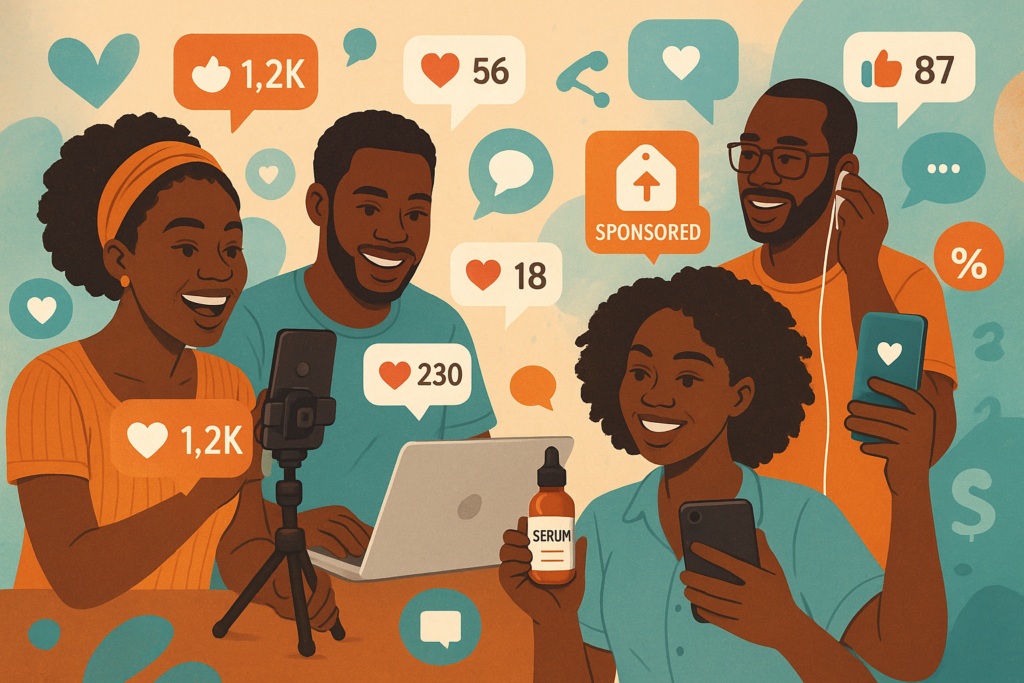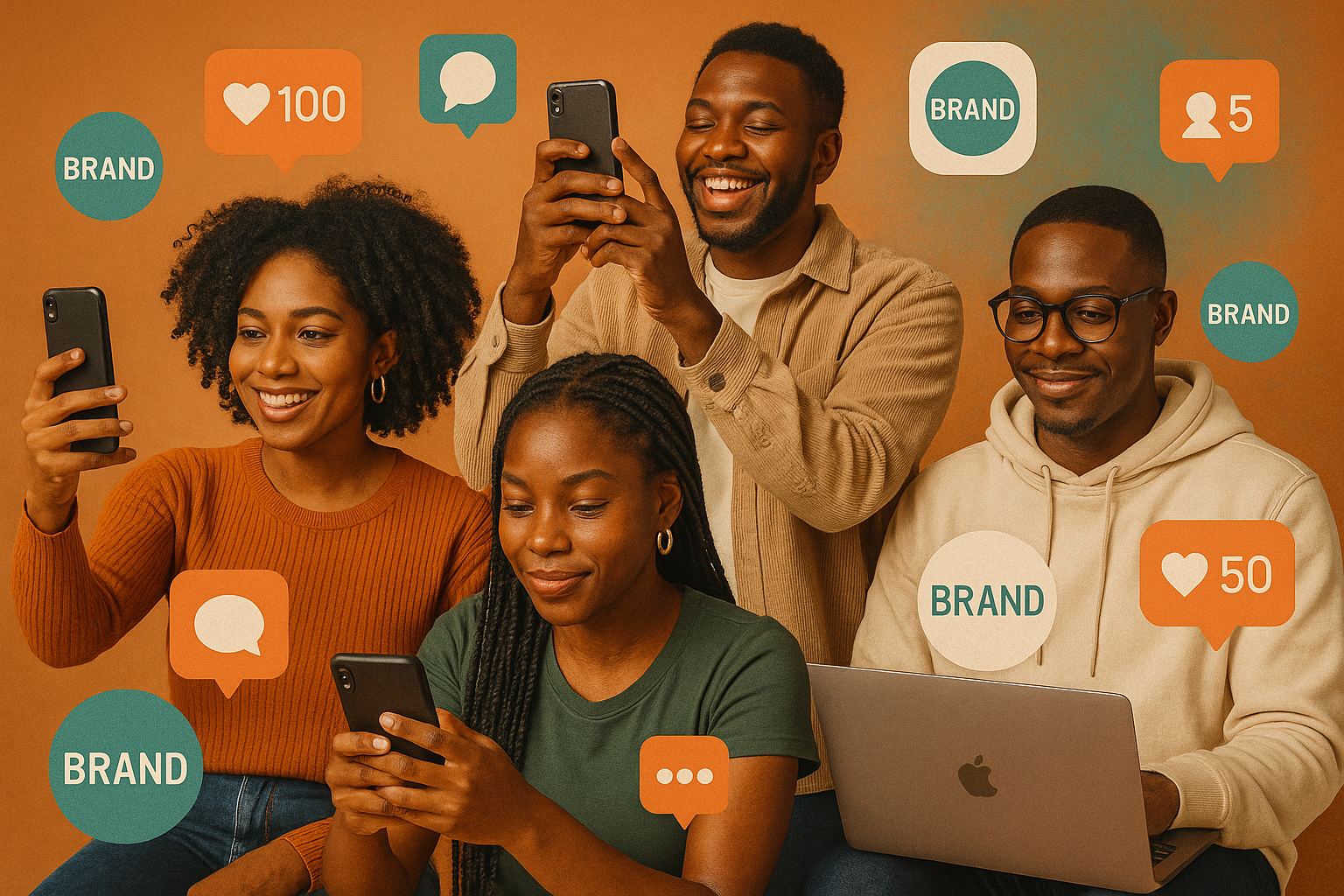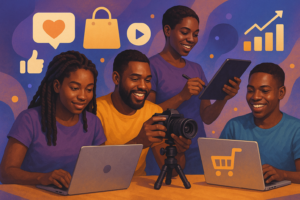For years, brands chased influencers with millions of followers, believing that reach equaled impact. Celebrity endorsements and mega-influencer partnerships commanded six-figure budgets based on the assumption that bigger audiences automatically delivered bigger results. But marketing data tells a dramatically different story. Micro-influencers—creators with 10,000 to 100,000 followers—consistently outperform their celebrity counterparts on engagement rates, conversion metrics, and return on investment. For business owners, startups, and marketing professionals, understanding why smaller creators drive bigger results isn’t just interesting—it’s essential for building cost-effective, high-performing influencer strategies that actually move business metrics rather than merely generating vanity impressions.
Defining the Micro-Influencer Landscape
Before examining why micro-influencers outperform larger creators, we need clear definitions of the influencer tiers and their characteristics.
Nano-influencers (1,000-10,000 followers) represent the smallest tier with highly engaged, niche audiences. These creators often focus on very specific topics—gluten-free baking in Seattle, vintage motorcycle restoration, or sustainable parenting—and maintain almost personal relationships with followers. Many nano-influencers still work primarily for product exchanges rather than cash payments.
Micro-influencers (10,000-100,000 followers) occupy the sweet spot where creators have built substantial audiences while maintaining high engagement and authenticity. They’ve typically established themselves as credible voices in specific niches—fitness, beauty, technology, finance, travel—and earn income from sponsored content while remaining relatable to followers.
Mid-tier influencers (100,000-500,000 followers) bridge micro and macro categories, having achieved significant reach while sometimes retaining stronger engagement than larger creators. These influencers often work with brands professionally, have managers or agents, and treat content creation as primary income source.
Macro-influencers (500,000-1 million followers) and mega-influencers (1 million+ followers) command large audiences and significant fees but often show lower engagement rates and less targeted reach. Many mega-influencers are celebrities who built followings through traditional media rather than organic content creation.
The micro-influencer category particularly interests brands because these creators have built audiences large enough to provide meaningful reach while maintaining the authenticity, engagement, and niche focus that drives actual business results.
The Engagement Paradox: Why Smaller Audiences Engage More
Perhaps the most striking difference between micro and mega-influencers involves engagement rates—the percentage of followers who actively interact with content through likes, comments, shares, and saves.
Research consistently shows inverse correlation between follower count and engagement rate. Studies across platforms find that accounts with 10,000-100,000 followers achieve average engagement rates of 3-6%, while accounts with over 1 million followers typically see engagement rates below 2%. Some mega-influencers with tens of millions of followers experience engagement rates below 1%, meaning 99% of their audience scrolls past content without meaningful interaction.
This engagement disparity stems from several factors. Authenticity and relatability diminish as creators grow. Micro-influencers feel like real people—neighbors, friends, approachable experts. They respond to comments, engage in conversations, and maintain genuine connections with followers. Mega-influencers become distant celebrities whose scale prevents personal interaction, creating parasocial relationships that feel less authentic.
Audience composition differs dramatically between tiers. Mega-influencers accumulate followers including many who followed during viral moments, for celebrity appeal, or out of casual interest without deep connection to content. Micro-influencers’ audiences typically consist of genuinely interested people who actively chose to follow because of specific interest in the creator’s niche and content.
Algorithm treatment varies by engagement patterns. Platform algorithms reward consistent engagement, so accounts generating high interaction rates receive preferential distribution. Micro-influencers’ higher engagement rates mean their content reaches higher percentages of their followers organically, while mega-influencers increasingly depend on paid promotion to reach even small fractions of their ostensible audience.
Content frequency and quality often deteriorate as creators scale. Micro-influencers frequently create all their own content, maintaining authentic voice and consistent quality. Larger creators often employ teams, resulting in more polished but sometimes less authentic content that audiences perceive as less genuine.
For brands, this engagement disparity has profound implications. A micro-influencer with 50,000 followers achieving 5% engagement delivers 2,500 engaged interactions per post. A mega-influencer with 5 million followers achieving 1% engagement delivers 50,000 engaged interactions—20 times more in absolute terms but at potentially 100 times the cost, making the micro-influencer far more cost-effective per engaged user.
Trust and Credibility: The Recommendation Effect
Beyond engagement metrics, micro-influencers demonstrate superior performance on the factor that matters most for brand partnerships: audience trust and willingness to act on recommendations.
Purchase intent studies reveal dramatic differences. Research by marketing platforms shows that 82% of consumers are highly likely to follow recommendations from micro-influencers, compared to just 55% for recommendations from celebrities or mega-influencers. When micro-influencers recommend products, their audiences perceive these endorsements as genuine recommendations from trusted sources rather than obvious paid promotions.
This trust advantage stems from several perception differences. Micro-influencers appear more authentic because they haven’t “sold out” to the same degree as mega-influencers who promote dozens of brands across multiple categories. When a micro-influencer carefully selects brand partnerships aligned with their content and values, recommendations feel genuine. When a celebrity with 10 million followers promotes everything from fitness supplements to luxury cars to mobile games, audiences recognize transparent pay-for-play arrangements.
Expertise perception proves stronger for micro-influencers within their niches. The micro-influencer focused exclusively on plant-based nutrition commands more credibility about vegan protein powders than a lifestyle mega-influencer who occasionally posts about wellness among travel, fashion, and entertainment content. Specialized focus creates perceived expertise that general-interest accounts can’t match.
Accessibility and relatability make micro-influencer recommendations feel more relevant. When someone who seems like they could be your friend or neighbor recommends a product, it resonates differently than a celebrity recommendation. Audiences think “if this works for someone like me, it might work for me” rather than “of course this luxury product works for someone wealthy and famous.”
Selective partnerships enable micro-influencers to maintain credibility that mega-influencers sacrifice through volume. Most micro-influencers promote perhaps 2-4 brands monthly, carefully choosing partnerships. Mega-influencers might promote 10-20+ brands monthly across posts and stories, diluting impact of any individual recommendation.
For businesses, this trust advantage translates to better conversion rates. The same marketing spend might reach 10x more people through a mega-influencer but convert at 1/3 the rate of micro-influencer campaigns, resulting in worse overall ROI despite greater gross reach.

Niche Targeting: Reaching the Right People, Not Just More People
Modern marketing increasingly recognizes that reaching the right audience matters more than reaching the largest audience. Micro-influencers excel at delivering highly targeted reach that aligns with specific customer profiles.
Micro-influencers typically focus on specific niches—sustainable fashion, budget travel, home organization, financial independence, specific fitness modalities, particular dietary approaches, or countless other specialized topics. This focus attracts audiences with demonstrated interest in exactly those topics, creating high-quality targeting that broad-reach influencers can’t match.
A skincare brand targeting consumers interested in Korean beauty products achieves far more relevant reach through five micro-influencers focused specifically on K-beauty than through a general beauty mega-influencer whose audience includes many people uninterested in Korean skincare. The absolute numbers favor the mega-influencer, but the qualified reach favors distributed micro-influencer partnerships.
Geographic targeting works more effectively with micro-influencers, many of whom cultivate local or regional followings. A restaurant chain expanding into specific cities can partner with micro-influencers in those exact markets, ensuring promotional reach concentrates where it generates actual foot traffic. Mega-influencers’ national or international audiences create waste reach in markets where the brand doesn’t operate.
Demographic precision improves through micro-influencer selection. Rather than a mega-influencer’s diverse audience requiring the brand’s targeting to be broad enough to appeal across demographics, brands can select micro-influencers whose audiences precisely match target customer profiles. A brand targeting millennial mothers can partner with parenting micro-influencers, ensuring almost every impression reaches the intended demographic.
Psychographic alignment enables even more sophisticated targeting. Micro-influencers’ focused content attracts audiences with specific values, interests, and lifestyles. Sustainable brands can partner with eco-conscious micro-influencers, ensuring their message reaches audiences already aligned with environmental values. Luxury brands can partner with aspiration-focused micro-influencers attracting audiences interested in premium products.
This targeting precision means that effective reach—audience members who might actually become customers—often proves higher for micro-influencer campaigns despite lower gross reach. The 50,000-follower vegan cooking micro-influencer delivers more valuable reach for plant-based food brands than the 5-million-follower food mega-influencer whose audience includes many meat-eaters.
Cost-Effectiveness: Better ROI Through Strategic Spending
Perhaps the most compelling business case for micro-influencers involves dramatically superior return on investment compared to mega-influencer partnerships.
Pricing disparities create opportunities for brands, particularly those with limited budgets. Mega-influencers command $10,000-$100,000+ per post, with celebrity influencers reaching into six or seven figures. Mid-tier influencers typically charge $1,000-$10,000 per post. Micro-influencers generally charge $100-$1,000 per post, with some accepting product exchanges rather than cash payment.
These pricing differences mean a brand’s $10,000 influencer budget might secure one post from a mega-influencer or 20-50 posts from multiple micro-influencers. The distributed approach typically generates better results across all meaningful metrics despite lower gross reach.
Cost per engagement calculations consistently favor micro-influencers. A $50,000 mega-influencer post reaching 5 million followers at 1% engagement generates 50,000 engagements at $1 per engagement. A $500 micro-influencer post reaching 50,000 followers at 5% engagement generates 2,500 engagements at $0.20 per engagement—five times more cost-effective.
Cost per acquisition or cost per conversion metrics show even starker differences. Because micro-influencer audiences trust recommendations more and align better with brand target demographics, conversion rates typically exceed those from mega-influencer campaigns by 2-3x or more. Combined with lower costs, this creates 10-20x better cost per acquisition in many cases.
Testing and optimization become affordable with micro-influencer partnerships. Brands can test multiple creators, content formats, messaging approaches, and targeting strategies for the cost of a single mega-influencer post. This experimentation reveals what works before scaling investment, reducing risk and improving overall campaign performance.
Long-term partnerships prove more feasible with micro-influencers due to affordability. Rather than one-off mega-influencer posts, brands can establish ongoing relationships with micro-influencers, creating sustained presence and repeated exposure that builds awareness and trust more effectively than isolated high-reach moments.
For startups and small businesses with limited marketing budgets, micro-influencers often represent the only viable influencer strategy. For larger brands, they provide cost-effective reach that allows budget stretching and performance optimization impossible with celebrity or mega-influencer focus.
Authenticity in the Age of Skepticism
Consumer skepticism about influencer marketing has grown as sponsored content proliferated. Audiences increasingly discount obvious paid promotions, viewing them as advertising rather than genuine recommendations. This skepticism disproportionately affects mega-influencers while micro-influencers maintain credibility.
Disclosure requirements mandating that sponsored content be labeled as such (using #ad, #sponsored, or similar tags) make paid partnerships explicit. However, audience reaction to these disclosures varies by influencer tier. When mega-influencers who constantly promote brands label content as sponsored, audiences expected this and discount recommendations accordingly. When micro-influencers who rarely post sponsored content label partnerships, audiences perceive this as honest transparency about an occasional partnership rather than constant promotion.
Selective partnership patterns enable micro-influencers to maintain authenticity that excessive promotion destroys. Because micro-influencers can be more selective about partnerships—choosing only brands they genuinely use and align with their values—their sponsored content feels more authentic. Mega-influencers’ volume demands prevent this selectivity, requiring promotion of products they may not actually use or believe in.
Audience expectations differ by influencer tier. Followers of mega-influencers expect constant sponsorships and have adapted to filtering promotional content. Followers of micro-influencers expect more genuine content with occasional sponsorships, making those partnerships feel more like trusted recommendations.
Creative control often remains with micro-influencers who create their own content rather than posting brand-supplied materials. This maintains authentic voice and style that audiences recognize and trust. Mega-influencers increasingly use brand-supplied content or follow strict creative briefs, resulting in polished but less authentic posts that feel like advertisements rather than personal recommendations.
Relationship depth between micro-influencers and followers creates accountability that protects authenticity. When audiences feel personally connected to creators, they’ll call out perceived selling out or inauthentic partnerships. This peer pressure incentivizes micro-influencers to maintain genuine alignment between promoted products and their actual values and usage.
For brands, partnering with authentic micro-influencers creates halo effects where association with trusted creators transfers credibility to promoted products. This credibility transfer proves far more effective than simple exposure from mega-influencers whose audiences view partnerships skeptically.
Platform Algorithms and Organic Reach
Social media platform algorithms increasingly reward genuine engagement over follower counts, creating structural advantages for micro-influencers’ content distribution.
Engagement-based distribution means platforms like Instagram, TikTok, and Facebook show content to users based on predicted interaction likelihood rather than simply broadcasting to all followers. Content generating quick engagement gets amplified to broader audiences, while content generating little interaction gets buried.
Micro-influencers’ higher engagement rates trigger algorithmic amplification, ensuring their content reaches high percentages of followers and gets pushed to new audiences through explore pages, recommended content, and other discovery features. Mega-influencers’ lower engagement rates result in content reaching smaller percentages of their ostensible audience, requiring paid promotion to achieve meaningful reach.
Authentic interaction signals that algorithms increasingly prioritize favor micro-influencers. Platforms can detect when engagement is genuine versus bot-driven or engagement pod artificial inflation. Micro-influencers’ organic engagement from genuinely interested followers generates algorithmic rewards that artificial engagement cannot match.
Content saturation effects hurt mega-influencers more than smaller creators. Followers of mega-influencers see content from many sources competing for attention, making individual posts less likely to generate interaction. Micro-influencer followers typically follow fewer accounts, meaning less competition for attention and higher likelihood of engagement with each post.
Story and ephemeral content performance particularly favors micro-influencers. Because stories appear in chronological order for online followers, micro-influencers whose audiences actively check their stories achieve high view rates. Mega-influencers’ stories get buried among dozens or hundreds of other accounts, reducing view rates dramatically.
For brands, understanding these algorithmic dynamics explains why micro-influencer partnerships often deliver better reach per follower than mega-influencer deals despite lower gross numbers. The effective reach—the percentage of followers who actually see content—consistently favors smaller creators.
Building Sustainable Brand Communities
Beyond individual campaign metrics, micro-influencers excel at building sustainable brand communities and long-term customer relationships that create lasting value.
Micro-influencer networks create distributed brand advocacy that scales sustainably. Rather than depending on a single mega-influencer whose partnership might end or whose audience might shift, brands working with 10, 50, or 100 micro-influencers build resilient networks resistant to individual creator volatility. If one micro-influencer partnership ends, 90+ others maintain brand presence and advocacy.
Cross-pollination effects occur when multiple micro-influencers in related niches mention the same brand. Audiences discovering the brand through multiple trusted sources develop stronger confidence than single-source exposure provides. This distributed endorsement pattern proves more persuasive than repeated exposure from a single mega-influencer.
Community building happens more naturally around micro-influencers whose audiences already feel connected. Brands can facilitate these communities through hashtags, group chats, or platforms bringing together customers discovered through various micro-influencers. These communities create ongoing engagement and word-of-mouth that extends well beyond individual sponsored posts.
User-generated content flows more freely from micro-influencer audiences who feel personal connection to creators. When micro-influencers encourage audiences to try products and share experiences, followers respond more enthusiastically than with impersonal mega-influencer requests. This organic UGC provides free promotional content while building social proof.
Long-term partnerships with micro-influencers create sustained brand presence that one-off mega-influencer posts cannot match. Brands can establish multi-month or even multi-year relationships where micro-influencers become genuine brand ambassadors, integrating products naturally into content over time rather than obvious single sponsored posts.
Feedback and product development benefits from micro-influencer partnerships. Smaller creators typically provide more detailed feedback about products, sharing both strengths and improvement opportunities. Their audience engagement reveals consumer perceptions and questions that inform product refinement and messaging.

Strategic Implementation: Building Effective Micro-Influencer Campaigns
For businesses convinced of micro-influencers’ advantages, effective implementation requires strategic approaches that differ from traditional mega-influencer campaigns.
Identification and vetting represent the first challenge—finding micro-influencers whose audiences align with target customers. Influencer marketing platforms like AspireIQ, Upfluence, and Grin provide discovery tools filtering by niche, audience demographics, engagement rates, and other criteria. Manual research through hashtags and competitor audience analysis supplements these tools.
Vetting requires examining not just follower counts but engagement quality, audience authenticity (checking for bot followers), content quality, brand alignment, and past partnership performance. The 50,000-follower account with 6% real engagement from target demographic members provides more value than the 200,000-follower account with 2% engagement from questionable audiences.
Relationship building matters more with micro-influencers than with mega-influencers represented by agents. Personal outreach acknowledging specific content and explaining genuine interest in partnership works better than generic mass emails. Micro-influencers respond to brands that clearly understand and appreciate their work rather than viewing them as interchangeable promotional vehicles.
Creative freedom should be maximized within brand guidelines. Micro-influencers succeed because they know their audiences and understand what content resonates. Overly prescriptive briefs result in content that feels like advertisements rather than authentic recommendations. Providing product information, key messages, and requirements while trusting creators’ expertise produces better content.
Performance tracking requires establishing clear KPIs—engagement rates, click-through rates, conversions, use of discount codes, or other metrics aligned with campaign objectives. Tracking links, unique codes, and UTM parameters enable attribution of results to specific creators, revealing which partnerships perform best and deserve expansion.
Fair compensation builds relationships and attracts quality creators. While micro-influencers charge less than mega-influencers, appropriate payment respects their work and audience value. Brands offering only product exchanges should target nano-influencers or clearly communicate value exchange. Paid partnerships should reflect the value creators provide, even if rates remain modest compared to larger influencers.
Relationship nurturing extends beyond individual campaigns. Maintaining contact with high-performing micro-influencers, engaging with their content, providing early product access, and expressing appreciation builds loyalty that makes partnerships more effective over time.
Common Pitfalls and How to Avoid Them
Despite micro-influencers’ advantages, businesses make predictable mistakes that undermine campaign effectiveness.
Judging influencers solely by follower count ignores the metrics that actually matter—engagement rate, audience quality, and alignment with target customers. The 100,000-follower account isn’t necessarily better than the 30,000-follower account. Vetting must examine engagement quality and audience demographics, not just size.
Expecting immediate viral results sets unrealistic expectations. Micro-influencer strategies work through distributed reach and accumulated exposure rather than single viral moments. Success comes from sustained campaigns with multiple creators rather than depending on one post to drive massive results.
Over-controlling creative destroys the authenticity that makes micro-influencers effective. Brands must trust creators to know their audiences while ensuring key messages and requirements are communicated. The balance between guidance and freedom determines content authenticity.
Neglecting relationship building treats micro-influencers transactionally rather than as partners. The best results come from genuine relationships where creators feel valued and appreciated rather than merely paid vendors.
Insufficient campaign duration prevents campaigns from building momentum. One-off posts rarely generate optimal results. Multi-post campaigns over weeks or months create repeated exposure that drives awareness and action more effectively.
Poor performance measurement prevents learning and optimization. Without clear tracking, brands can’t identify which partnerships worked, what content resonated, or how to improve future campaigns.
Fake follower blindness results in partnerships with accounts that appear valuable but have artificial audiences. Checking engagement patterns, follower quality, and using fraud detection tools prevents wasted spend on inauthentic accounts.
Conclusion: The Future Belongs to Authentic Connection
The rise of micro-influencers represents more than a marketing trend—it reflects fundamental shifts in how audiences engage with content, form brand relationships, and make purchase decisions. In an era of advertising saturation and declining trust in traditional promotion, authentic recommendations from relatable creators cut through noise in ways that celebrity endorsements and mega-influencer partnerships cannot match.
For businesses of all sizes, micro-influencers offer path to cost-effective, highly targeted, high-engagement marketing that drives actual business results rather than merely generating vanity metrics. The data consistently shows that smaller creators deliver bigger results across engagement, trust, conversion, and ROI despite lower gross reach.
Success requires moving beyond follower count fixation toward strategic approaches that prioritize audience quality, engagement authenticity, niche alignment, and relationship building. Brands that master micro-influencer marketing gain sustainable competitive advantages through distributed advocacy networks that scale efficiently while maintaining the authenticity that drives consumer action.
The future of influencer marketing increasingly belongs not to celebrities and mega-influencers but to the authentic, specialized, engaged micro-influencers who maintain genuine connections with audiences. Smart businesses are recognizing this reality and shifting strategies accordingly—building partnerships with smaller creators who drive bigger results.
References
- Influencer Marketing Hub. (2024). “The State of Influencer Marketing 2024: Benchmark Report.” Industry Research.
- Markerly. (2023). “Instagram Marketing: Does Influencer Size Matter?” Platform Analytics Study.
- HelloSociety (New York Times Company). (2023). “The Rise of Micro-Influencers: Engagement and ROI Analysis.” Marketing Research.
- AspireIQ. (2024). “Micro-Influencer Marketing: Engagement Rates and Performance Metrics.” Platform Data Analysis.
- Upfluence. (2024). “Influencer Marketing ROI: Comparing Performance Across Influencer Tiers.” Industry Report.
- Nielsen. (2023). “Trust in Advertising: Social Recommendations vs. Celebrity Endorsements.” Consumer Trust Study.
- Influencer Intelligence. (2024). “The Authenticity Gap: Why Smaller Creators Outperform Celebrities.” Marketing Analysis.
- Klear (Meltwater). (2024). “The State of Influencer Marketing 2024.” Industry Benchmarks.
- Mediakix. (2023). “Influencer Marketing Pricing: What Influencers Really Charge.” Rate Survey.
- Traackr. (2024). “Building Sustainable Influencer Marketing Programs.” Strategic Research.
Additional Resources
- AspireIQ Platform: https://www.aspireiq.com – Influencer marketing platform for discovering and managing creator partnerships
- Upfluence: https://www.upfluence.com – Influencer search and campaign management software
- CreatorIQ: https://www.creatoriq.com – Enterprise influencer marketing platform with analytics
- Influencer Marketing Hub: https://influencermarketinghub.com – Industry news, research, and educational resources
- Klear by Meltwater: https://klear.com – Influencer discovery and campaign tracking platform
- Social Media Today – Influencer Marketing: https://www.socialmediatoday.com/topic/influencer-marketing – Industry news and best practices
- HypeAuditor: https://hypeauditor.com – Influencer analytics and fraud detection tools
- The Shelf: https://www.theshelf.com/the-blog – Influencer marketing insights and case studies




